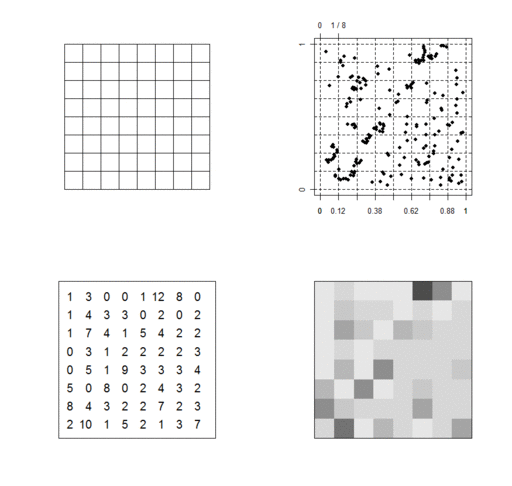Raster Data
Raster
- Raster image
- a dot matrix data structure representing a generally rectangular grid of pixels, or points of color, viewable via a monitor, paper of other display medium.1
Raster data is used to represent continuous phenemena in our world. Continuous phenomena have an assigned value at all positions on a surface. Raster data is commonly seen in satellite images. Satellite images are, simply put, pictures of the earth from space. Just like the pictures you can take with a hand-held digital camera, the information is in the pixels. Each pixel has a number value that can be translated into a color. Raster data si commonly output by sensors.
Common Data Formats
Here are some common data formats you may encounter:
- GeoTIFF: A standard that allows embedding geographic information in a TIFF file.
- NetCDF: A multidimensional data format that allows for multiple variables covering 1 or more dimensions.
- Arcinfo/Ascii grid: Proprietary format by Esri
- JPEG: A compressed image format that can be assigned bounding coordinates.
Scale
- Scale
- Proportional difference between representation and actual object
Scale bars are commonly used on maps to visualize the map distance in real world units.
Scales can also be expressed in words(lexical form) or in a ratio (representative fraction).
Lexical Form
- “five meters per centimeter”
- “120 miles per inch”
Representative Fraction
- 1:500,000
- 1:25,000
Resolution
Types:
- Spatial Resolution
- Number of pixels per unit (pixels per inch)
- Temporal Resolution
- Number of frames per time interval (20 frames per second)
- Spectral Resolution
- Range of light wavelengths that can be captured by a given sensor (number of light bands)
- Radiometric Resolution
- Number of differences in brightness that can be detected (number of shades)
-
Raster Graphics - Scratch Wiki. wiki.scratch.mit.edu. Retrieved April 14 2015. ↩

